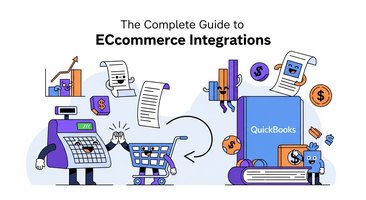QuickBooks banking and cash flow management for online sellers requires sophisticated approaches that address unique payment timing and working capital challenges while optimizing liquidity and growth potential. Companies with advanced cash flow management achieve 35% better working capital efficiency, improved payment timing optimization, and enhanced growth funding compared to those using basic banking approaches.
Yet 73% of online sellers struggle with effective cash flow management in QuickBooks, leading to liquidity challenges and missed opportunities worth an average of $45,000 annually in financing costs and operational inefficiencies.
The complexity increases as online operations involve multiple payment processors, varying settlement schedules, marketplace payment holds, and seasonal cash flow patterns that require sophisticated tracking and optimization strategies.
The Online Seller Cash Flow Challenge:
Ecommerce operations face unique cash flow timing issues including payment processor delays, marketplace reserves, and inventory investment requirements that traditional businesses don't experience. Seasonal fluctuations in sales and inventory needs create working capital challenges that require strategic planning and management.
Multi-channel selling creates complex payment timing patterns when different platforms have varying settlement schedules and fee structures. International sales add currency conversion timing and costs that affect cash flow predictability and optimization.
Growth financing requirements for inventory investment and marketing spend require accurate forecasting and optimization to maintain liquidity while maximizing opportunities.
This comprehensive guide reveals proven strategies for optimizing QuickBooks banking and cash flow management, addressing online seller challenges, and leveraging Klavena's cash flow enhancement features to maximize working capital efficiency and growth potential.
Understanding Online Seller Cash Flow Dynamics
Online selling creates unique cash flow patterns that require specialized understanding and management approaches to optimize liquidity and support sustainable growth.
Payment Processing Complexity:
Settlement timing varies significantly across payment processors with credit card transactions typically settling in 1-3 business days while ACH payments may take 3-5 days. Payment holds and reserves by processors can tie up significant working capital, especially for new or high-risk merchants.
Chargeback reserves and rolling reserves affect cash flow predictability and require careful monitoring and planning for optimal working capital management. International transaction delays and currency conversion timing create additional complexity in cash flow planning and optimization.
Processor fees including transaction fees, monthly fees, and chargeback fees affect net cash flow and require accurate tracking for profitability analysis and optimization.
Marketplace Settlement Patterns:
Amazon payments typically occur every two weeks but may include reserves and performance-based holds that affect cash flow timing and predictability. eBay payments through managed payments have different timing than historical PayPal settlements and require adjustment in cash flow planning.
Shopify payments settlement timing depends on the chosen payment processor and may vary based on transaction volume and account standing. Etsy payments and other marketplace platforms each have unique settlement schedules and reserve policies that affect working capital availability.
Holiday and peak season payment delays due to increased transaction volumes and processing backlogs require strategic planning and cash flow preparation.
Inventory Investment Timing:
Seasonal purchasing requirements for holiday and peak selling seasons create significant working capital needs that must be planned and financed strategically. Lead time considerations for international sourcing require advance payment and inventory investment that affects cash flow timing.
Minimum order quantities and volume discounts from suppliers create lumpy cash outflows that require careful timing and working capital management. Customs and duties payments for imported goods create additional cash flow timing considerations and costs.
Storage and fulfillment costs including warehouse fees and shipping expenses create ongoing cash flow requirements that must be managed alongside inventory investment.
QuickBooks Banking Setup for Ecommerce
Effective QuickBooks banking configuration requires understanding ecommerce-specific requirements while optimizing for cash flow visibility and management efficiency.
Account Structure Design:
Operating accounts should be organized to provide clear visibility into cash flow from different sources while enabling effective management and forecasting. Payment processor accounts for each major processor enable accurate tracking of settlement timing and fee allocation.
Reserve accounts for marketplace holds and processor reserves provide visibility into restricted funds while enabling accurate cash flow planning and analysis. Savings accounts for tax obligations and seasonal cash management provide separation and planning capabilities for major expenses.
International accounts for foreign currency operations enable accurate tracking and conversion management while optimizing currency exchange timing and costs.
Bank Feed Integration:
Automated transaction import eliminates manual data entry while ensuring accurate and timely cash flow tracking across all accounts and payment sources. Transaction categorization rules ensure consistent classification while reducing manual effort and improving accuracy.
Reconciliation automation streamlines monthly bank reconciliation while identifying discrepancies and exceptions that require attention. Multi-currency support handles international transactions and currency conversion with appropriate tracking and reporting.
Security features including bank-level encryption and multi-factor authentication protect sensitive financial data while enabling convenient access and management.
Payment Processor Integration
Credit Card Processing:
Stripe integration provides detailed transaction data including fees, refunds, and chargeback information with automatic categorization in QuickBooks. PayPal business account integration handles both online and in-person transactions with unified reporting and cash flow tracking.
Square integration manages both online and point-of-sale transactions with comprehensive reporting and reconciliation capabilities. Authorize.net and other payment gateways require different integration approaches based on their data formats and capabilities.
Fee tracking and allocation across different card types and transaction volumes provides insights for cost optimization and pricing strategies.
ACH and Bank Transfers:
Direct bank transfers for B2B customers require different timing and fee considerations compared to credit card transactions while providing cost advantages. International wire transfers involve additional fees and timing considerations that affect cash flow planning and customer relationships.
Recurring payment setup for subscription customers requires careful tracking and management to ensure consistent cash flow and customer satisfaction. Failed payment handling and retry procedures affect cash flow timing and customer relationship management.
Bank draft and check processing for customers preferring traditional payment methods require different timing and risk considerations in cash flow planning.
Cash Flow Forecasting and Analysis
Effective cash flow management requires sophisticated forecasting capabilities that consider online selling patterns while providing strategic insights for optimization and planning.
Short-Term Forecasting
Daily Cash Flow Management:
Payment settlement tracking provides visibility into expected cash receipts from different processors and marketplaces for immediate liquidity planning. Expense timing including inventory purchases, marketing spend, and operational costs requires coordination with cash receipt forecasting.
Working capital requirements for inventory investment and operational expenses must be balanced against available cash and credit facilities. Seasonal patterns in both receipts and expenses require adjustment in daily cash flow planning and management.
Emergency reserves for unexpected expenses or payment delays ensure operational continuity while maintaining strategic flexibility and growth opportunities.
Weekly and Monthly Planning:
Payment processor settlement schedules provide predictable cash flow patterns that enable strategic planning and optimization of payment timing. Marketplace payments including Amazon's bi-weekly schedule require coordination with expense timing and working capital needs.
Inventory investment timing based on supplier payment terms and lead times requires coordination with cash flow availability and seasonal demand patterns. Marketing spend timing to optimize customer acquisition while managing cash flow impact on operations and growth.
Tax obligations including sales tax payments and estimated tax payments require planning and cash reserve management for compliance and optimization.
Long-Term Strategic Planning
Seasonal Cash Flow Modeling:
Holiday preparation cash flow requirements for inventory investment and marketing spend require strategic planning and financing arrangements. Post-holiday cash flow patterns including returns processing and inventory liquidation affect first quarter planning and optimization.
Summer slowdown patterns in many ecommerce categories require cash conservation strategies while maintaining market position and operational capabilities. Back-to-school and other seasonal events create predictable patterns that enable strategic planning and optimization.
Growth investment timing including new product launches and market expansion requires coordination with seasonal cash flow patterns and financing availability.
Growth Scenario Planning:
Revenue growth impact on cash flow requirements including inventory investment and operational scaling requires strategic modeling and financing planning. Market expansion cash flow requirements for new channels and geographic markets require careful analysis and resource allocation.
Product line expansion cash flow implications including development costs and inventory investment require strategic evaluation and timing optimization. Acquisition opportunities and their cash flow impact require comprehensive analysis and financing strategy development.
Risk scenarios including economic downturns and competitive challenges require contingency planning and cash flow stress testing for operational resilience.
Klavena's Cash Flow Enhancement Features
Klavena transforms QuickBooks cash flow management into comprehensive working capital optimization that addresses online seller challenges while providing strategic insights and automation.
Advanced Cash Flow Analytics
Multi-Channel Integration:
Comprehensive visibility into cash flow from all sales channels and payment processors provides unified management and optimization capabilities. Settlement timing analysis across different platforms reveals optimization opportunities and working capital efficiency improvements.
Fee impact analysis on net cash flow helps optimize payment processor selection and pricing strategies for maximum profitability. Currency conversion optimization for international sales minimizes costs while maximizing cash flow efficiency and predictability.
Reserve management tracking provides visibility into restricted funds while enabling strategic planning and optimization of working capital utilization.
Predictive Analytics:
Machine learning algorithms analyze historical patterns and external factors to provide accurate cash flow forecasting and optimization insights. Seasonal adjustment capabilities improve forecast accuracy by incorporating predictable patterns and market dynamics.
Growth impact modeling reveals how business expansion affects cash flow requirements and enables strategic planning and financing decisions. Risk analysis identifies potential cash flow challenges and provides mitigation strategies for operational resilience.
Scenario planning capabilities enable evaluation of different strategic options and their cash flow implications for optimal decision-making.
Working Capital Optimization
Inventory Investment Optimization:
Demand forecasting integration optimizes inventory investment timing and quantities to minimize working capital requirements while maintaining service levels. Supplier payment optimization balances cash flow impact with supplier relationships and volume discounts.
Seasonal planning capabilities optimize inventory investment timing for maximum sales capture while minimizing carrying costs and cash flow impact. Product mix optimization focuses working capital investment on the highest-return products and categories.
Liquidation planning for slow-moving inventory minimizes working capital tie-up while maximizing recovery value and cash flow optimization.
Payment Timing Optimization:
Processor comparison analysis reveals which payment methods and processors provide the best cash flow timing and cost optimization. Settlement optimization strategies maximize cash flow availability while minimizing fees and processing costs.
Customer payment terms optimization balances cash flow improvement with customer satisfaction and competitive positioning. Supplier payment timing optimization manages cash flow while maintaining relationships and taking advantage of early payment discounts.
Tax payment timing optimization manages compliance requirements while optimizing cash flow impact and interest costs.
Banking Relationship Management
Effective online seller banking requires strategic relationship management that addresses unique ecommerce needs while optimizing costs and service levels.
Business Banking Optimization
Account Structure Strategy:
Primary operating accounts should provide optimal cash management capabilities while minimizing fees and maximizing interest earnings on available balances. Merchant services integration with business banking provides streamlined operations while optimizing costs and cash flow timing.
Credit facilities including lines of credit and term loans provide working capital flexibility while supporting growth opportunities and seasonal requirements. International banking capabilities for global operations provide currency management and international payment processing.
Cash management services including automated transfers and investment options optimize idle cash while maintaining liquidity for operational needs.
Fee Optimization:
Transaction fee analysis across different account types and usage patterns reveals optimization opportunities for cost reduction. Balance requirements and fee waivers through minimum balances or transaction volumes provide cost optimization opportunities.
Service fees for specialized services including wire transfers and international transactions require analysis and optimization for cost-effective operations. Credit facility costs including interest rates and fees require comparison and negotiation for optimal financing arrangements.
Cash management fees for automated services and investment options require cost-benefit analysis for optimal utilization and return optimization.
Credit and Financing Management
Working Capital Financing:
Line of credit arrangements provide flexible financing for inventory investment and seasonal cash flow requirements while minimizing interest costs. Invoice factoring for B2B sales provides immediate cash flow while transferring collection risk and administrative burden.
Inventory financing specialized for ecommerce operations provides working capital while using inventory as collateral for favorable terms. Revenue-based financing uses sales performance as collateral for growth capital while maintaining equity and control.
Equipment financing for warehouse and fulfillment equipment provides capital while preserving cash flow for operational and growth needs.
Credit Management:
Credit monitoring and score management ensure optimal borrowing capacity while identifying improvement opportunities and potential issues. Relationship management with multiple lenders provides competitive options while ensuring adequate credit availability.
Covenant compliance for credit facilities requires ongoing monitoring and management to maintain favorable terms and avoid restrictions. Documentation management for credit applications and renewals ensures efficient processing and optimal terms.
Strategic planning for future financing needs ensures adequate capital availability while optimizing costs and maintaining financial flexibility.
Cash Flow Optimization Strategies
Advanced cash flow management enables strategic optimization that creates competitive advantages while supporting sustainable growth and operational efficiency.
Payment Terms Optimization
Customer Payment Terms:
Credit terms for B2B customers require balancing cash flow improvement with competitive positioning and customer relationship management. Early payment discounts provide cash flow acceleration while maintaining customer satisfaction and loyalty.
Payment method incentives for faster-settling options improve cash flow while potentially reducing processing costs and administrative burden. International customer terms require consideration of currency conversion and collection risks while optimizing cash flow timing.
Subscription billing optimization for recurring revenue businesses improves cash flow predictability while reducing administrative burden and customer acquisition costs.
Supplier Payment Optimization:
Early payment discounts from suppliers can provide significant returns on available cash while improving supplier relationships and priority status. Extended terms negotiation based on payment history and volume provides cash flow improvement while maintaining supplier relationships.
Seasonal payment arrangements with suppliers provide cash flow optimization during peak inventory investment periods while maintaining supply security. Volume commitment agreements may provide payment term improvements while ensuring supply availability and cost optimization.
International supplier payment timing optimization considers currency conversion and transfer costs while maintaining supplier relationships and supply security.
Seasonal Cash Flow Management
Peak Season Preparation:
Inventory financing for holiday season stock buildup provides working capital while using inventory as collateral for favorable financing terms. Marketing investment timing optimizes customer acquisition while managing cash flow impact and return on investment.
Operational scaling cash flow requirements including temporary staffing and facility expansion require planning and financing coordination. Payment processor preparation for increased transaction volumes ensures adequate capacity while optimizing processing costs and timing.
Cash reserve building during slower periods provides working capital for peak season investment while maintaining operational flexibility and growth opportunities.
Post-Peak Optimization:
Inventory liquidation strategies maximize cash recovery from excess stock while minimizing carrying costs and working capital tie-up. Returns processing optimization minimizes cash flow impact while maintaining customer satisfaction and operational efficiency.
Debt reduction using peak season cash flow improves financial position while reducing interest costs and increasing future borrowing capacity. Investment planning for next season's growth uses available cash for strategic advantage while maintaining liquidity and operational flexibility.
Tax planning coordination with seasonal cash flow patterns optimizes timing and minimizes cash flow impact of tax obligations.
Performance Monitoring and Analysis
Effective cash flow management requires comprehensive monitoring and analysis capabilities that provide strategic insights while identifying optimization opportunities.
Key Performance Indicators
Cash Flow Efficiency:
Days sales outstanding measurement reveals collection efficiency while identifying optimization opportunities for cash flow improvement. Cash conversion cycle analysis including inventory turnover and payment timing provides comprehensive working capital efficiency insights.
Working capital turnover ratios reveal efficiency in capital utilization while identifying optimization opportunities for growth and profitability. Seasonal efficiency patterns provide insights for optimization and strategic planning throughout the year.
Growth efficiency measurement reveals how effectively cash flow supports business expansion while maintaining operational stability and profitability.
Liquidity Management:
Current ratio and quick ratio analysis ensures adequate liquidity while identifying optimization opportunities for cash utilization. Cash runway calculation based on current burn rate provides strategic planning insights and risk management capabilities.
Debt service coverage ratios ensure adequate cash flow for financing obligations while maintaining growth investment capability. Seasonal liquidity patterns provide insights for cash management and financing planning throughout the year.
Emergency reserves adequacy ensures operational resilience while optimizing cash utilization for growth and strategic opportunities.
Strategic Analysis and Optimization
Trend Identification:
Cash flow trend analysis reveals patterns and opportunities for optimization while identifying potential challenges requiring strategic attention. Profitability trends and their cash flow impact provide insights for strategic planning and resource allocation decisions.
Growth sustainability analysis ensures cash flow can support expansion plans while maintaining operational stability and profitability targets. Market opportunity analysis considers cash flow requirements and timing for strategic positioning and competitive advantage.
Risk assessment of cash flow vulnerabilities provides insights for contingency planning and operational resilience strategies.
Optimization Planning:
Working capital optimization opportunities through inventory management, payment terms, and operational efficiency provide strategic advantages. Financing optimization through cost reduction and term improvement provides cash flow benefits while maintaining strategic flexibility.
Investment prioritization based on cash flow impact and return optimization ensures resource allocation generates maximum strategic value. Growth planning integration with cash flow capabilities ensures expansion strategies remain sustainable and profitable.
Competitive positioning through superior cash flow management provides operational advantages while supporting strategic market positioning.
Implementation Best Practices
Successful QuickBooks banking and cash flow management implementation requires systematic approaches that address online seller challenges while optimizing for efficiency and strategic value.
Setup and Configuration
Banking Integration:
Account setup with proper categorization and integration ensures accurate cash flow tracking while enabling strategic analysis and optimization. Payment processor integration provides real-time visibility into settlement timing and fees for optimal cash flow management.
Automation rules for transaction categorization and reconciliation reduce manual effort while ensuring accuracy and consistency in cash flow tracking. Security protocols protect sensitive financial data while enabling convenient access and management capabilities.
Reporting configuration provides strategic insights while meeting compliance and audit requirements for comprehensive financial management.
Process Development:
Daily cash flow monitoring procedures ensure adequate liquidity while identifying optimization opportunities and potential issues. Weekly planning processes coordinate cash flow with operational requirements and strategic priorities for optimal resource utilization.
Monthly analysis procedures provide strategic insights while identifying trends and optimization opportunities for continuous improvement. Quarterly reviews ensure cash flow management continues supporting business objectives while adapting to changing market conditions.
Annual planning integration ensures cash flow management supports strategic objectives while optimizing for growth and competitive positioning.
Optimization and Management
Performance Monitoring:
Cash flow accuracy tracking ensures forecasting remains reliable while identifying improvement opportunities and optimization strategies. Efficiency measurement reveals optimization opportunities while demonstrating the value of enhanced cash flow management capabilities.
Strategic impact analysis connects cash flow management with business results while identifying additional optimization opportunities and strategic advantages. User satisfaction monitoring ensures processes meet operational needs while identifying training and improvement opportunities.
Competitive analysis reveals optimization opportunities while ensuring cash flow management provides strategic advantages and market positioning.
Continuous Improvement:
Process refinement based on operational experience improves efficiency while maintaining accuracy and strategic value creation. Technology adoption ensures businesses utilize new capabilities while maintaining operational efficiency and strategic positioning.
Training updates keep staff current with cash flow management best practices while maximizing utilization of available capabilities and features. Strategic alignment ensures cash flow management continues supporting business objectives while adapting to market evolution and competitive dynamics.
Professional development for financial management staff ensures expertise remains current while providing maximum strategic value and operational efficiency.
Conclusion and Strategic Recommendations
QuickBooks banking and cash flow management for online sellers represents a critical capability that affects operational stability, growth potential, and competitive positioning. The unique characteristics of ecommerce operations require sophisticated cash flow management that goes beyond basic banking to create strategic advantages.
Strategic Value Creation:
Working capital optimization through sophisticated cash flow management provides competitive advantages while supporting sustainable growth and operational efficiency. Liquidity management ensures operational stability while maximizing opportunities for strategic investment and market positioning.
Strategic insights from comprehensive cash flow analysis support better decision-making while identifying optimization opportunities and competitive advantages. Operational efficiency through automated processes reduces administrative burden while improving accuracy and strategic focus.
Growth enablement through effective cash flow management supports expansion while maintaining financial stability and competitive positioning.
Implementation Recommendations:
Evaluate current cash flow management practices and identify optimization opportunities that could provide competitive advantages and operational efficiency. Implement comprehensive solutions like Klavena that provide advanced cash flow analytics and optimization beyond basic QuickBooks capabilities.
Plan systematically for cash flow management implementation that addresses online seller challenges while optimizing for strategic value and operational efficiency. Invest in training and process development to maximize utilization of enhanced cash flow management capabilities and strategic benefits.
Monitor performance continuously and optimize based on operational experience and changing business requirements to maintain competitive advantages and financial stability.
Klavena's Cash Flow Excellence:
Klavena transforms QuickBooks cash flow management into comprehensive working capital optimization that addresses online seller challenges while providing strategic insights and competitive advantages through advanced analytics and automation capabilities.
Getting Started:
Klavena's cash flow enhancement features eliminate QuickBooks limitations while providing advanced analytics and optimization capabilities that create competitive advantages and support sustainable growth for online sellers.
Online selling cash flow complexity continues increasing with multichannel operations and payment processing evolution that basic QuickBooks banking cannot address effectively. Implement Klavena's enhanced cash flow management today – the working capital optimization and strategic insights create sustainable competitive advantages that justify immediate investment in professional cash flow management solutions.





